How to Make NY-Style Matcha Cheesecake ~ A Perfect Fusion of Eastern and Western Flavors
A Rich Flavor Born from the Meeting of East and West
The meeting of New York-style cheesecake and matcha is truly a culinary art woven by the fusion of Eastern and Western cultures. The “NY-style matcha cheesecake,” with its rich, creamy texture and the elegant bitterness of matcha creating a perfect harmony, has become popular not only in Japan but also in cafés across America and Europe in recent years.
According to a 2022 survey, the overseas matcha dessert market grew by 30% compared to the previous year, with matcha cheesecake becoming a standard menu item in high-end patisseries and cafés, especially in New York. Behind this popularity is the attention to matcha’s health benefits and its vibrant green color that looks appealing on social media.
Characteristics of Authentic NY-Style Matcha Cheesecake
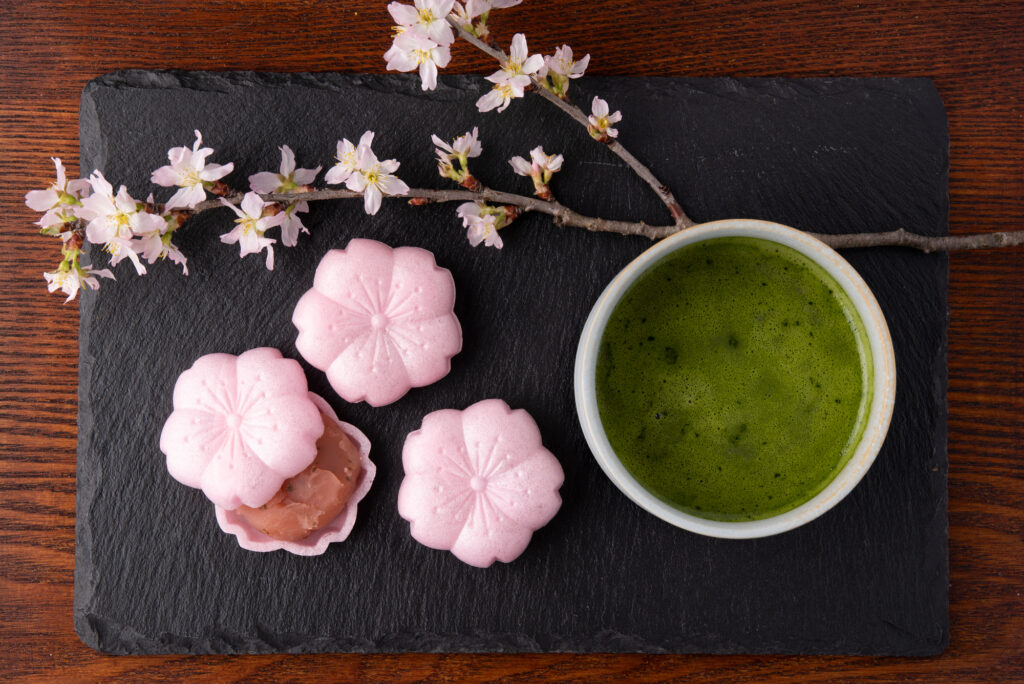
Compared to regular cheesecake, authentic New York-style cheesecake has the following characteristics:
- Height: 2-3 times thicker than typical cheesecake
- More cream cheese: Creates a rich, smooth texture
- Baked method: Develops a unique texture and flavor through thorough baking
- Substantial crust: A crispy cookie base forms the foundation
When fusing with matcha, the grade of matcha chosen becomes crucial for the flavor. Culinary-grade matcha has a weak flavor and cannot bring out the true appeal of matcha. Using high-grade “usucha” matcha intended for tea ceremony allows you to enjoy the deep flavor authentic to NY-style matcha cheesecake.
Key Points for Choosing Matcha
Choosing the right matcha is essential for making a perfect matcha cheesecake. A common mistake in American matcha desserts is using powder colored with food dye. Authentic matcha has:
- A vibrant green color (yellowish matcha indicates diminished freshness)
- A fine powder texture with a smooth mouthfeel
- Rich aroma with a good balance of sweetness and bitterness
By selecting “usucha” grade matcha used in Japanese tea ceremony, you can recreate the authentic flavor of matcha cheesecake popular in New York. High-quality matcha from Uji, Kyoto, or Shizuoka is especially recommended.
While overseas matcha desserts can sometimes be overly sweet, this recipe emphasizes the original flavor of matcha, pursuing a perfect balance between Eastern and Western elements.
Wildly Popular in New York! The Appeal and Evolution of Matcha Cheesecake
The Revolution Born from the Fusion of Matcha and NY Cheesecake
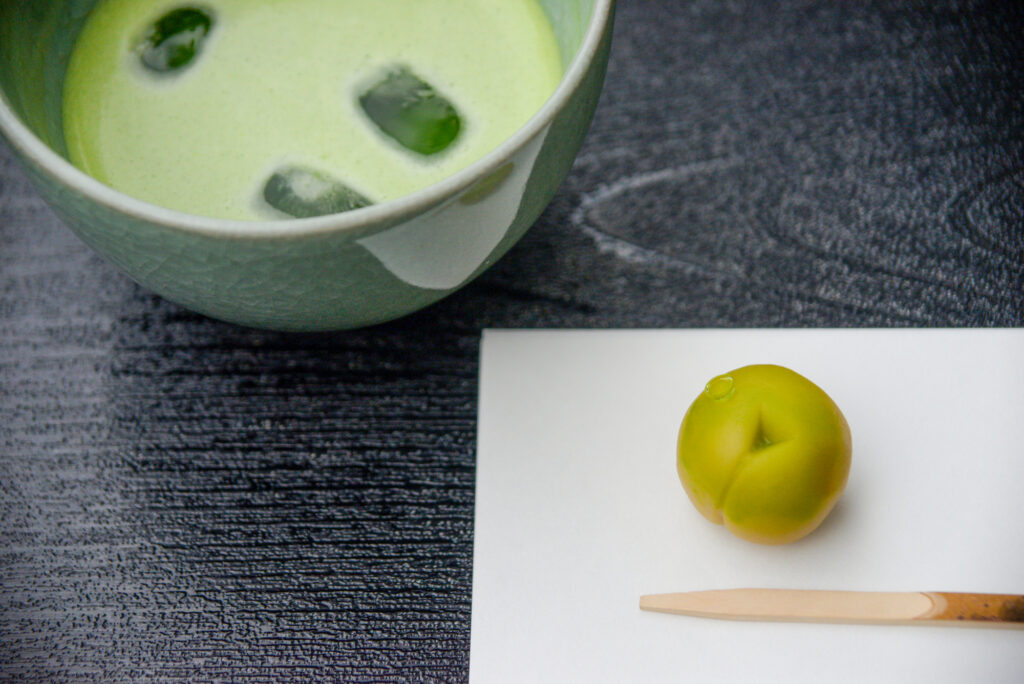
The explosive popularity of matcha cheesecake in New York is not merely a trend. The fusion of traditional Japanese matcha and America’s representative dessert, “NY cheesecake,” has gained attention as an innovative sweet that beautifully brings out the best of both cultures.
Matcha cheesecake began creating buzz in New York’s SoHo district around 2018 and has grown into a standard menu item at high-end patisseries and cafés across the city in just a few years. Particularly at popular establishments like “Lady M” and “Spot Dessert Bar,” long lines of people seeking matcha cheesecake have become a daily sight.
The Reality of Matcha Popularity in America
According to the latest market research, the North American matcha market is projected to expand at an average annual growth rate of 8.7% from 2022 to 2027. Especially in New York, sales of matcha-related products have increased approximately threefold over the past five years, with matcha cheesecake leading the way.
The main reasons for its popularity are threefold:
- Visual appeal: The vibrant green color creates beauty that looks great on social media
- Balance of flavors: Perfect harmony between matcha’s astringency and the rich sweetness of cheese
- Compatibility with health consciousness: Drawing attention as a dessert incorporating matcha’s health benefits
Unique Evolution Created by the NY Style
New York’s matcha cheesecake has developed its own uniqueness, distinct from Japanese matcha sweets. Characteristic features include a thickness of about 7-8 cm and a greater quantity of rich cream cheese. While Japanese matcha sweets emphasize delicacy, the NY version pursues “boldness” and “richness.”
Additionally, through the creative ingenuity of American chefs, various variations have emerged, such as black sesame sauce, white chocolate ganache, and matcha cookie crumble toppings. These are evidence that overseas matcha sweets are not mere imitations but have undergone their own evolution.
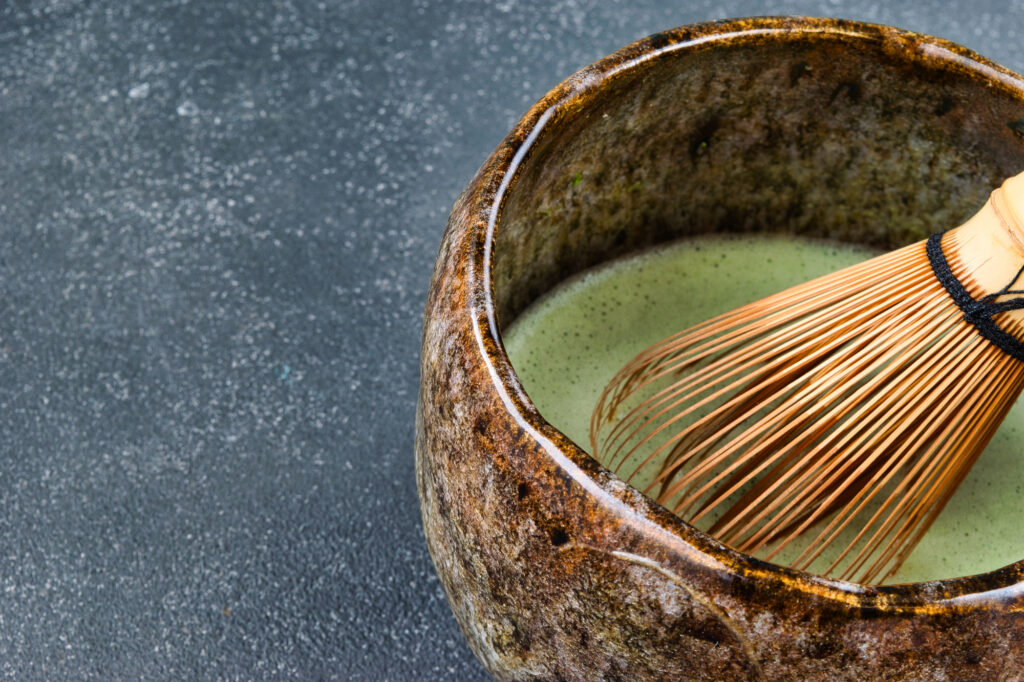
Matcha cheesecake, which respects the traditional Japanese matcha flavor while adding bold New York-style arrangements, is truly opening a new page in matcha culture as a bridge between Eastern and Western cultures.
Ingredients and Preparation for Authentic NY-Style Matcha Cheesecake
Ingredients Needed for Authentic NY-Style Matcha Cheesecake
Selecting high-quality ingredients is the key to success in making authentic NY-style matcha cheesecake. Matcha is the most crucial ingredient affecting flavor. Choose high-quality drinking-grade matcha rather than culinary grade. Characterized by a more vibrant green color and rich aroma compared to common cooking powder, this creates the authentic taste of NY-style matcha cheesecake.
Basic ingredients (for one 18cm springform pan):
Cream cheese: 450g (brought to room temperature) Granulated sugar: 150g Eggs: 3 (medium to large size) Heavy cream: 200ml High-quality matcha powder: 15-20g (adjustable according to preferred strength) Lemon juice: 1 teaspoon Vanilla essence: 1/2 teaspoon
For the base:
Digestive biscuits or graham crackers: 150g Unsalted butter: 70g (melted)
Key Points for Preparation
The characteristics of NY-style matcha cheesecake lie in its smooth, creamy texture and moist melt-in-the-mouth quality. Among the matcha sweets popular in America, NY cheesecake particularly maximizes the flavor of Japanese matcha.
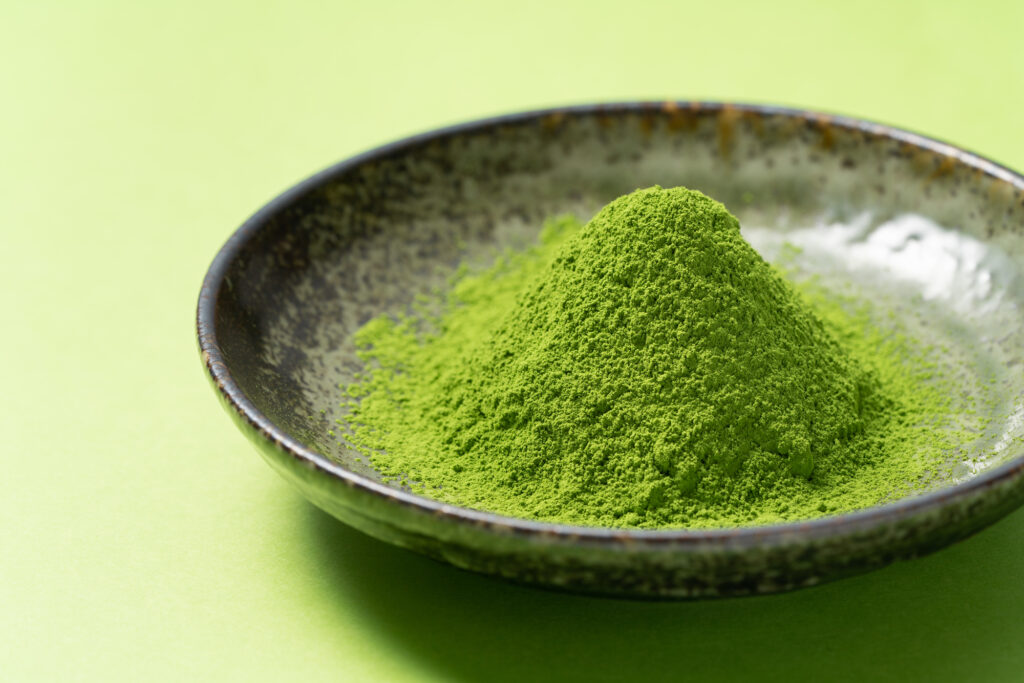
Temperature management of ingredients: Make sure cream cheese is brought to room temperature (20-22°C). If it remains cold, it tends to form lumps, preventing a smooth batter. This is a point emphasized even in overseas matcha sweet recipes.
Preparation of matcha: Dissolving matcha powder in a small amount of hot water (about 30ml) just before use prevents lumps and allows for uniform mixing. However, avoid boiling water and use lukewarm water of about 60°C. This is a secret to making matcha cheesecake practiced by top New York patissiers.
Preheating the oven: Since we’ll be using the “water bath” method of baking with steam, preheat the oven to 150°C. This method, also adopted by specialty matcha sweet shops in America, is essential for the uniform baking of cheesecake.
High-quality ingredients and precise preparation determine the taste of authentic NY-style matcha cheesecake. Particularly the selection of matcha is the very reason why high-grade Japanese matcha is valued overseas as well.
Expert Tips! Foolproof Matcha Cheesecake Step-by-Step Instructions
Basic Proportions and Key Points
The secret to successful NY-style matcha cheesecake lies in the ingredient proportions and temperature management. The golden ratio practiced by professional patissiers comes from the exquisite balance between cream cheese and matcha. Using 15-20g (about 2% of the total batter) of high-quality matcha powder enhances the vibrant green color and aromatic flavor.
Since matcha is sensitive to heat, exposure to temperatures above 80°C causes it to turn brownish and diminishes its flavor. NY-style cheesecake is baked slowly at low temperature, making it the ideal cooking method for preserving matcha’s beautiful color and aroma.
Step-by-Step Instructions
- Temperature adjustment of ingredients: Make sure cream cheese is brought to room temperature (about 20°C) before use. If it remains cold, it tends to form lumps, compromising the smooth texture.
- Sifting matcha: Always sift matcha through a fine strainer before mixing with other ingredients. This prevents lumps and results in a uniform color.
- Mixing technique: Start mixing cream cheese with a hand mixer at low speed, gradually increasing the speed while being careful not to incorporate too much air. Excessive mixing makes it prone to cracking during baking.
- Steam management: Top-tier American patisseries use the “water bath method” when baking cheesecakes, utilizing steam. Placing the cake pan on a tray filled with hot water prevents surface cracking and maintains a moist texture.
- Temperature management: Ideally, bake at 180°C for the first 10 minutes, then reduce to 150°C and continue baking for 40-50 minutes. When a bamboo skewer inserted comes out clean, it’s a sign that baking is complete.
Professional Finishing Techniques

At the popular New York patisserie “Lady M,” matcha cheesecake is finished with a thin dusting of matcha powder and gold leaf for an elegant touch. Additionally, serving with “matcha cream” made by mixing heavy cream and matcha in a 1:1 ratio adds depth to the flavor, offering a delightful fusion of American and Japanese styles.
The combination of Japanese matcha and NY-style cheesecake has gained popularity overseas since the 2010s, and currently, there are over 300,000 posts with the hashtag “#matchacheesecake” on Instagram, making it a significant trend.
Differences in Matcha Culture Between America and Japan ~ Characteristics of Overseas Matcha Sweets
Japanese and American Perspectives on Matcha – At the Intersection of Tradition and Innovation
Matcha, with over a thousand years of history in Japan, has undergone a completely different evolution in America. While in Japan it is associated with the spirituality of “wabi-sabi” exemplified in tea ceremony and strict etiquette, in New York and other parts of America, it is positioned as a “healthy luxury ingredient.” Since the 2010s, matcha has gained explosive popularity in the New York café scene, with its vibrant green color and exotic flavor drawing attention as an “Instagram-worthy” ingredient.
Characteristics of American-Style Matcha Sweets
American matcha sweets have the following characteristics:
- Emphasis on sweetness: While Japanese wagashi have subtle sweetness, NY-style recipes predominantly feature more pronounced sweetness
- Bold combinations: Fusion with Western classic sweets like cheesecake, donuts, cookies, and ice cream
- Visual impact: Decorative plating and toppings that leverage the vibrant color
- Diversity of textures: Compositions that allow enjoyment of multiple textures at once – creamy, crispy, chewy, etc.
According to market research firm Mintel, matcha-flavored food and beverage products launched in America in 2022 increased by 30% compared to the previous year, gaining particularly high support among Millennials and Generation Z.
Differences in Matcha Quality and Usage
While in Japan there is an emphasis on matcha grade and region, using high-quality matcha sparingly, overseas matcha sweets tend to prioritize visual vibrancy, using more matcha for coloring purposes. The owner-chef of New York’s popular patisserie “Spot Dessert Bar” says, “Americans are attracted more to the color and health image of matcha than its bitterness.”
On the other hand, in recent years, authentic matcha sweets using high-grade matcha from Uji, Kyoto, or Shizuoka have been increasing, centered around Michelin-starred restaurants and specialty shops in New York. At establishments like “Cha-An” and “Hiroki,” a new matcha culture is being nurtured that fuses Japanese tradition with Western techniques.
Overseas matcha sweets, represented by NY-style matcha cheesecake, have the freedom to make bold arrangements while respecting Japanese tradition, and this is what fascinates food enthusiasts worldwide. Matcha has now transcended borders and continues to expand new possibilities while fusing with the food cultures of various countries.
ピックアップ記事
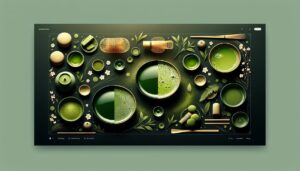
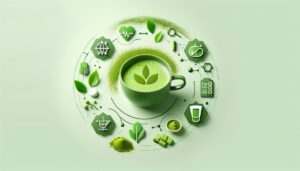
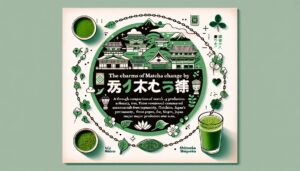


Comments